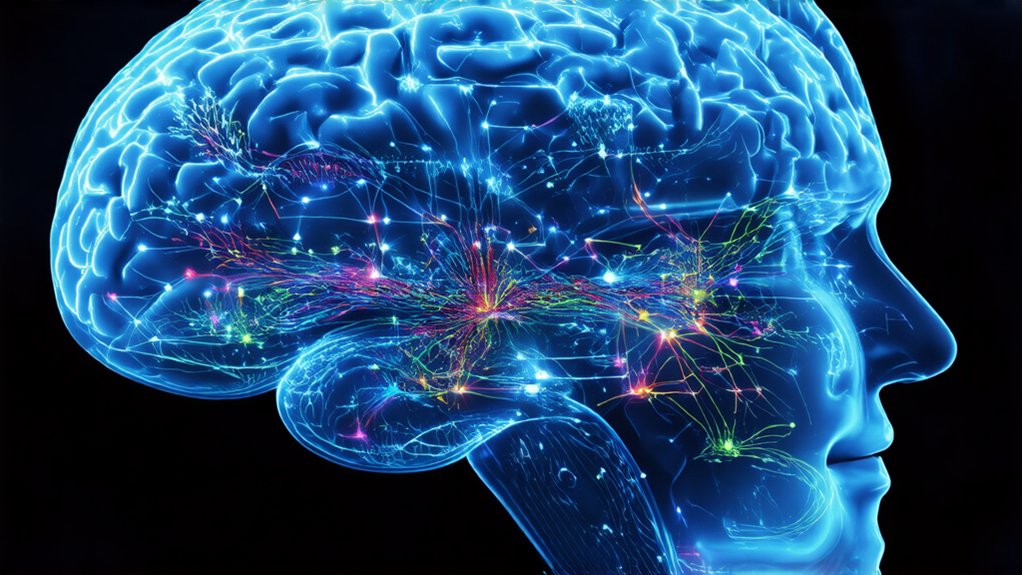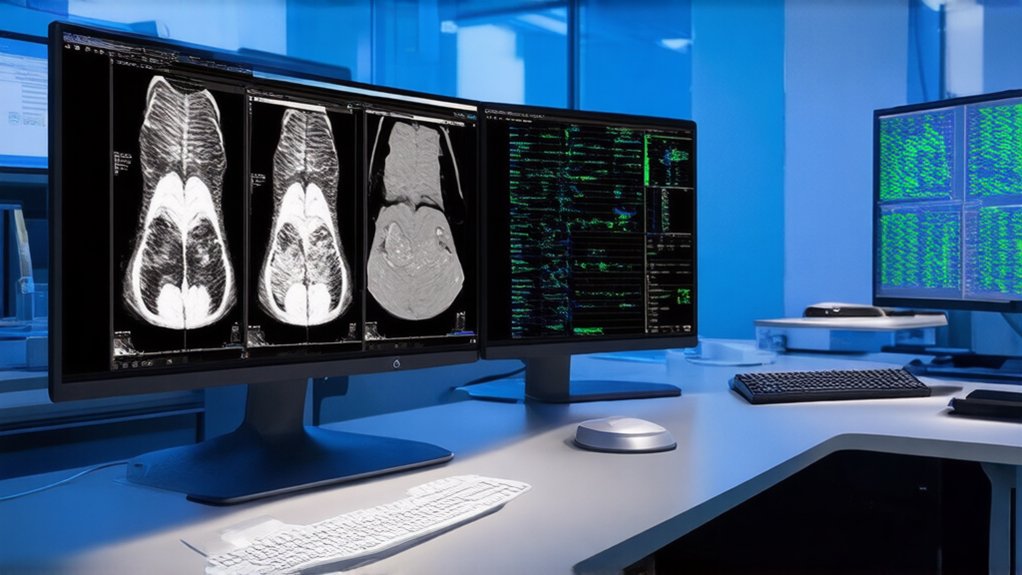AI is cracking the code of neuron signals, turning brain whispers into actionable data. Machine learning and deep learning are at the heart of this revolution, folks. Artificial Neural Networks, mimicking the brain’s own wiring, sift through messy brain activity like a detective on a caffeine binge.
Then there’s Convolutional Neural Networks—oh, they shine at untangling multidimensional brain data, making sense of what was once just static. Large Language Models are jumping in too, translating raw brain signals into actual words. It’s wild. And don’t forget DUNL, this new framework that breaks down neural time series into simple kernels. Pretty clever, if you ask me—AI playing scientist.
Convolutional Neural Networks untangle brain data chaos, Large Language Models translate signals to words—DUNL’s clever kernel makes AI the ultimate scientist!
But wait, advancements in Brain-Computer Interfaces are where things get real. AI boosts BCI accuracy and speed, letting people control devices with mere thoughts. Real-time decoding? Yeah, it’s happening. These algorithms adapt on the fly, tailoring to each user’s quirks.
Take DFINE, a deep-learning whiz that handles missing data like a pro. It’s not perfect, but hey, who knew machines could learn to read brains without a manual? Researchers are all hyped, pushing for personalized BCIs that evolve over time.
Now, for understanding brain function, AI’s uncovering patterns we’d never spot. It predicts cognitive states, decoding how brains react to stimuli. Enter MARBLE, spotting common activity across animals—fascinating, right? Or how about predicting mouse movements from imaging data? High accuracy, low drama. It’s like AI’s saying, “I got this figured out.”
Clinically, AI’s a game-changer for disorders. It analyzes EEG data for early detection, tailors treatments, and powers neuroprosthetics for better motor control. Even spotting depression patterns for personalized care. Furthermore, AI is enabling personalized neuroscience by tailoring treatments to individual neural profiles.
But let’s be blunt—the “black-box” nature of some models? That’s a headache. AI’s brilliant, yet opaque, leaving researchers scratching their heads. Emotional? You bet—imagine the hope for patients, the frustration with limitations.
All in all, this tech’s pushing boundaries, one neuron at a time. This progress is further amplified by research topics that foster collaboration among researchers, engineers, and practitioners, enhancing the overall advancement of AI in neuroscience. (Word count: 341)




